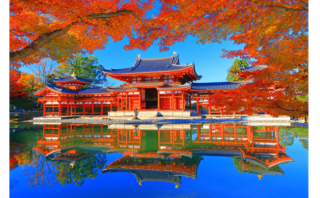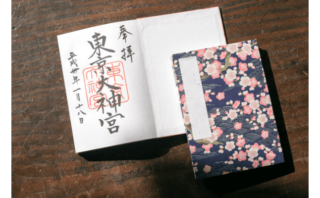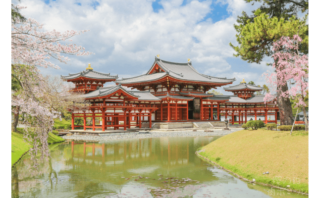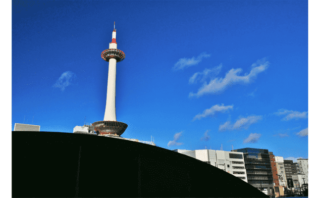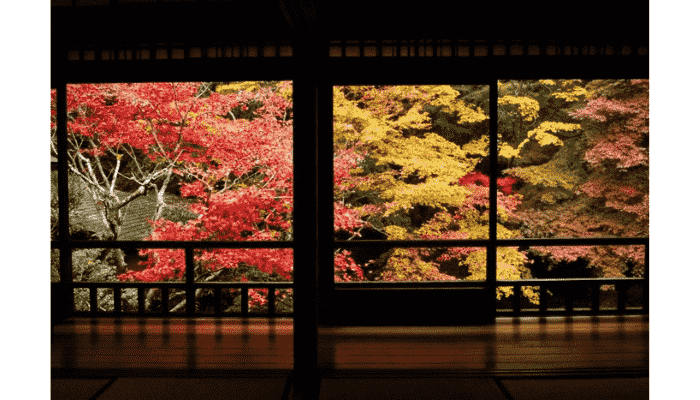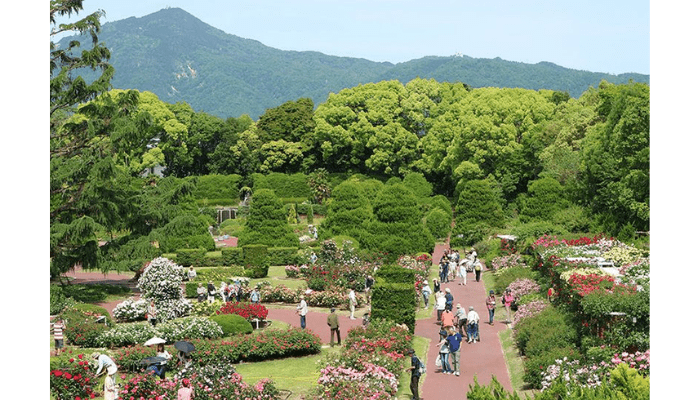Southern Kyoto is home to many historic temples and shrines, known for their deep spiritual significance. The region is filled with power spots where visitors can receive blessings, and some believe that Kyoto itself is a city protected by strong spiritual energy—making the entire area a power spot in its own right.
On my visit, I explored Ujigami Shrine, a historic site located in Uji, a city famous for its high-quality green tea. This ancient shrine once served as the guardian shrine of Byodoin Temple and holds the distinction of having the oldest existing shrine building in Japan.
In this article, I will introduce the highlights of Ujigami Shrine, including must-see spots within the grounds, access information, and details about goshuin (shrine stamps) and protective charms—all from the perspective of a shrine enthusiast!
What Is Ujigami Shrine?
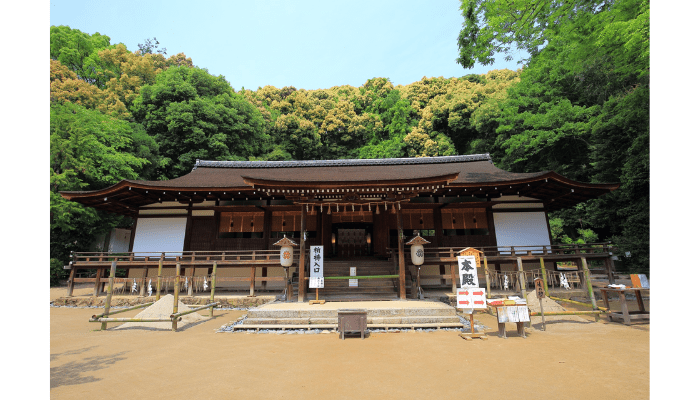
Uji, located in Kyoto, has long been a retreat for Heian-era aristocrats who sought relaxation in its peaceful surroundings. The city is widely known for its rich cultural heritage, including Byodoin Temple, featured on the 10-yen coin and the 10,000-yen bill, as well as Uji tea, one of Japan’s most famous high-quality teas.
With over a thousand years of history, Uji’s traditions and culture continue to captivate visitors today, offering a timeless charm that blends the past with the present.
Japan’s Oldest Shrine Building
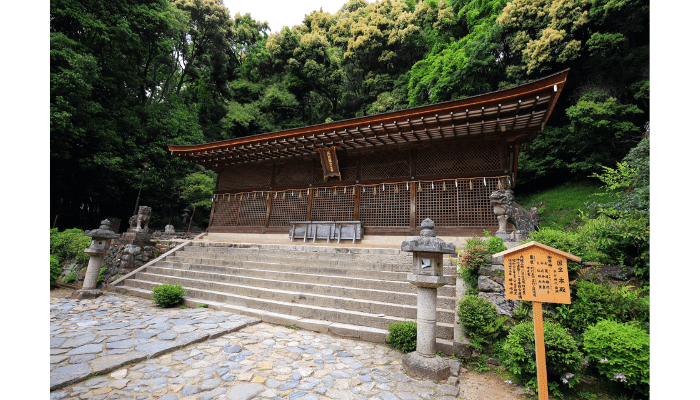
Kyoto is a city with a long and rich history, having served as Japan’s capital from the establishment of Heian-kyo in 794 until 1869. During the Heian period, Kyoto flourished, giving rise to remarkable structures such as Byodoin Temple and Daigo-ji Temple.
The main hall of Ujigami Shrine dates back over 960 years, making it the oldest existing shrine building in Japan.
Recent dendrochronological (tree-ring) analysis has revealed that the main hall was built around 1060, while the worship hall contains wood from around 1215. Ujigami Shrine is also listed in the Engishiki Jinmyocho, a Heian-period record of important shrines, highlighting its historical and cultural significance.
A UNESCO World Heritage Site
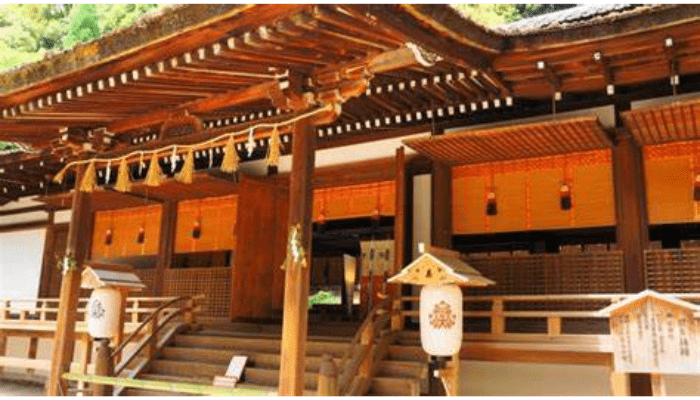
Ujigami Shrine is recognized as a UNESCO World Heritage Site as part of the “Historic Monuments of Ancient Kyoto.” It stands alongside famous landmarks such as Kinkaku-ji (Golden Pavilion), Kiyomizu-dera, and Nijo Castle, making it an essential part of Japan’s cultural heritage.
Despite its status as a World Heritage Site, Ujigami Shrine remains a sacred place of deep spiritual significance, where people have worshipped for centuries. If you’re visiting Kyoto, this historic shrine is well worth a visit.
Ujigami Shrine
- Address: 59 Uji Yamada, Uji City, Kyoto Prefecture
- Map: [Google Maps]
- Access:
- 10-minute walk from Keihan Uji Station
- 15-minute walk from JR Uji Station
- Phone: 0774-21-4634
- Closed: Open year-round
- Hours: 9:00 AM – 4:30 PM (subject to seasonal changes)
- Admission: Free
- Parking: Not available
- Official Website: [Ujigami Shrine – Kyoto Prefecture Website]
The History of Ujigami Shrine
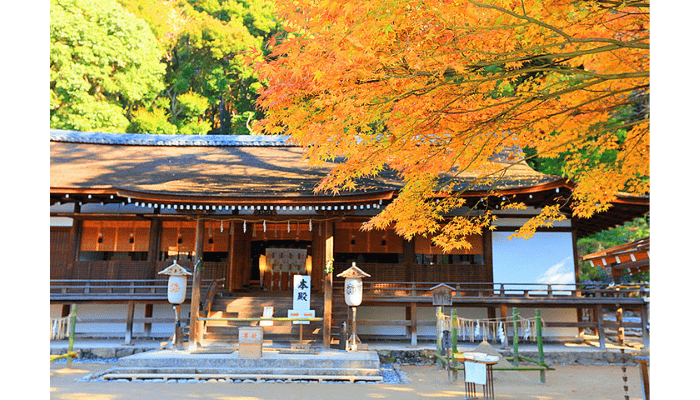
Did you know that Uji has a history dating back thousands of years? This area is mentioned in both the Kojiki and Nihon Shoki, Japan’s oldest historical texts, highlighting its long-standing significance.
Uji was not only a political center but also a key hub for land and water transportation. At times, it even became a battleground for major conflicts over strategic control.

Over the centuries, Uji has played a crucial role in shaping Japanese culture. It is featured in classic literary works such as The Tale of Genji (Uji Jujo), The Manyoshu, and The Tale of the Heike.
Since Ujigami Shrine’s main hall was built in the mid-11th century, it’s possible that Murasaki Shikibu—the author of The Tale of Genji—may have visited this very shrine. Just imagining that connection to history feels truly enchanting, doesn’t it?
How to Get to Ujigami Shrine
Here’s a guide on how to reach Ujigami Shrine.
Uji is located between Kyoto and Nara, but don’t let that fool you—it’s actually very accessible. If you take the JR Nara Line, you can reach Uji from Kyoto Station in about 20 minutes.
The shrine sits at the foot of Asahiyama, on the eastern bank of the Uji River. It’s different from Uji Shrine, which has its torii gate facing the river.
To get to Ujigami Shrine, walk along Sawarabino-michi, a path extending 200–300 meters west of Uji Shrine. Make sure not to confuse the two!
Nearest Stations
- JR Uji Station → 17-minute walk
- Keihan Uji Station → 10-minute walk
Walking from the station takes 5 to 10 minutes, depending on your route. Choose the best transport option based on your schedule and budget.
By JR (Japan Railways)
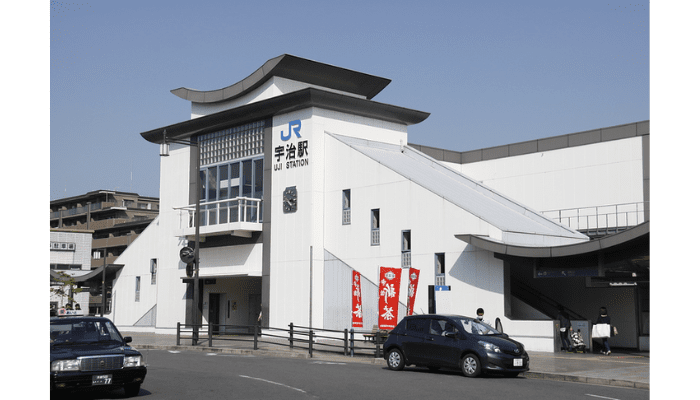
- Take the JR Nara Line from Kyoto Station (Platform 8–10).
- Board a Local Train or Miyakoji Rapid bound for Uji.
- Get off at JR Uji Station (South Exit) and walk 17 minutes to the shrine.
- Taxi Option: A taxi from the station takes 5–6 minutes and costs around 540 yen.
By Keihan Railway
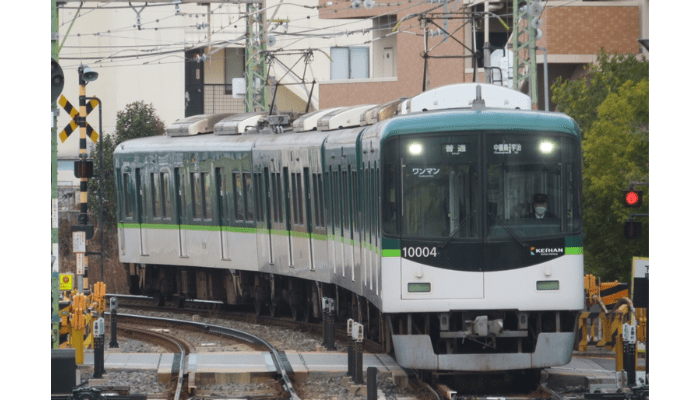
Take the Keihan Uji Line to Keihan Uji Station.
The shrine is about 700 meters away, or a 10-minute walk.
If you’re coming from Kyoto or Osaka, consider purchasing the Keihan Uji-Fushimi 1-Day Pass (900 yen for adults, 450 yen for children), which allows unlimited rides within the designated area for the day.
The Blessings of Ujigami Shrine
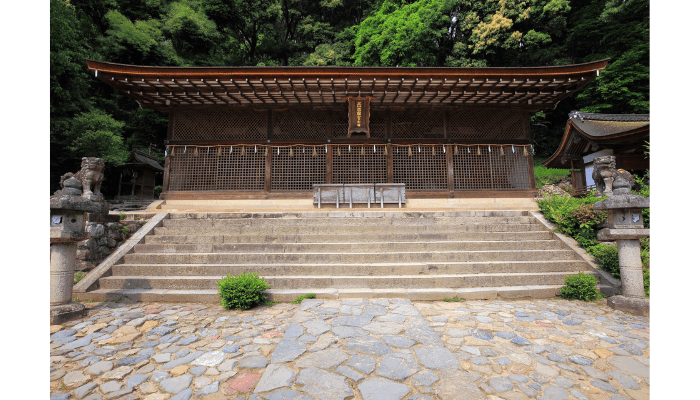
Ujigami Shrine enshrines three deities: Emperor Ōjin, Emperor Nintoku, and Ujinowaki Iratsuko. Among them, Ujinowaki Iratsuko was a prince of ancient Japan closely connected to Uji.
Did you know that the name “Uji” was once written as “菟道” (pronounced Uji)? According to legend, when Ujinowaki Iratsuko traveled from Kawachi Province (present-day Osaka) to Uji, he got lost along the way. Just then, a rabbit appeared and guided him to a safe place, frequently looking back to make sure he followed. This story is said to be the origin of the name “Uji.”
Prince Ujinowaki Iratsuko was one of the sons of Emperor Ōjin, the 15th emperor of Japan. From a young age, he was highly intelligent and well-versed in various fields, including classical texts. His wisdom was so remarkable that even his father acknowledged his talent, appointing him as crown prince over his two older brothers.

However, when Emperor Ōjin passed away, Ujinowaki Iratsuko chose to relinquish the throne to his elder brother, stepping aside voluntarily. His half-brother later became Emperor Nintoku.
Because of his extraordinary intellect, Ujinowaki Iratsuko has been worshipped as a deity of learning for centuries. Many visitors come to Ujigami Shrine to pray for success in academics and entrance exams.
The shrine is also believed to bring blessings for romance, safe childbirth, victory, and business prosperity. If you have the chance to visit, be sure to offer a prayer!
Highlights of Ujigami Shrine
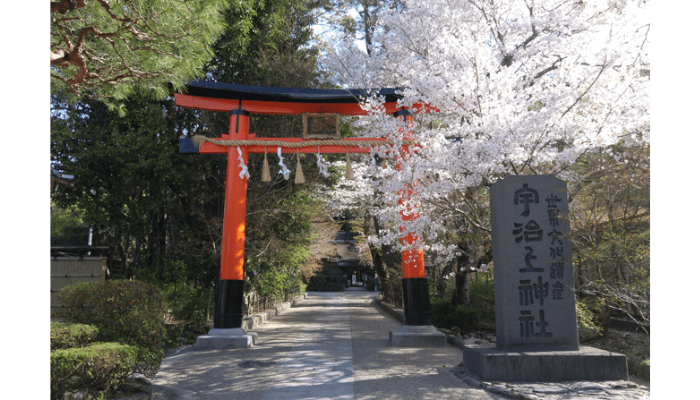
As mentioned earlier, the main hall of Ujigami Shrine was built during the Heian period (794–1185) and is the oldest surviving Shinto shrine structure in Japan.
When you visit, you might find the shrine smaller than expected, but it was once part of a larger complex together with Uji Shrine. Until the Meiji era (1868–1912), the two were worshipped as one under the name “Rikyu-sha” (Imperial Villa Shrine). The entire area, from the riverbank to the foothills, was considered sacred.
The name “Rikyu” (Imperial Villa) comes from the belief that Prince Ujinowaki Iratsuko once had a residence in this area.
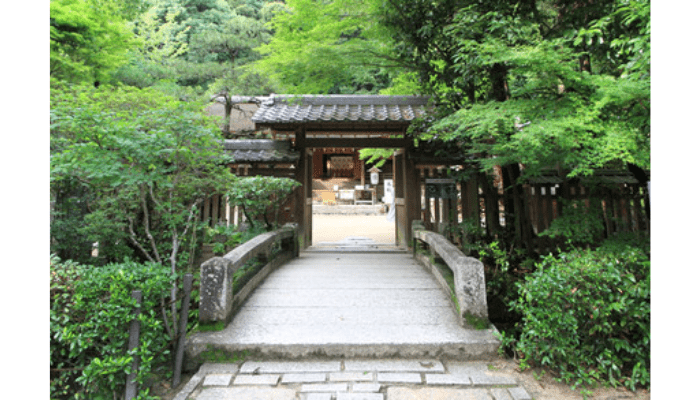
Walking along Sawarabino-michi, the path connecting Uji Shrine and Ujigami Shrine, you may feel a sense of spiritual purification as you immerse yourself in the peaceful atmosphere.
In this guide, we’ll explore the unique charm of Ujigami Shrine in more detail. We’ll also introduce goshuin (temple stamps) and omamori (protective charms), so be sure to read until the end!
1. Worship Hall (National Treasure)

The first structure that welcomes visitors to Ujigami Shrine is the Worship Hall (Haiden), which was built in 1215 during the early Kamakura period. It has been designated as a National Treasure due to its historical and architectural significance.
This Worship Hall is used for religious ceremonies and prayers. First-time visitors may mistake it for the Main Hall (Honden), but the Main Hall is actually located behind it.
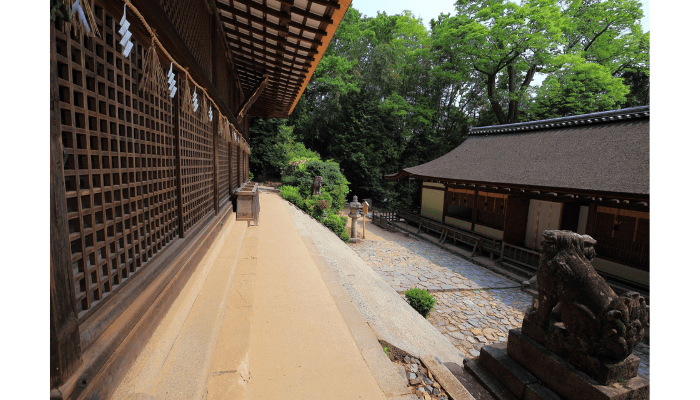
The Worship Hall is built in the shinden-zukuri style, a traditional architectural style from the Heian period, using cypress wood from the Kamakura era.
If you look closely, you’ll notice that the structure is asymmetrical, with differences in the number of pillars and design on each side. This unique design was created to accommodate different ceremonial purposes.
The hall’s graceful appearance is a testament to the advanced craftsmanship of the time, making it a must-see for architecture enthusiasts.
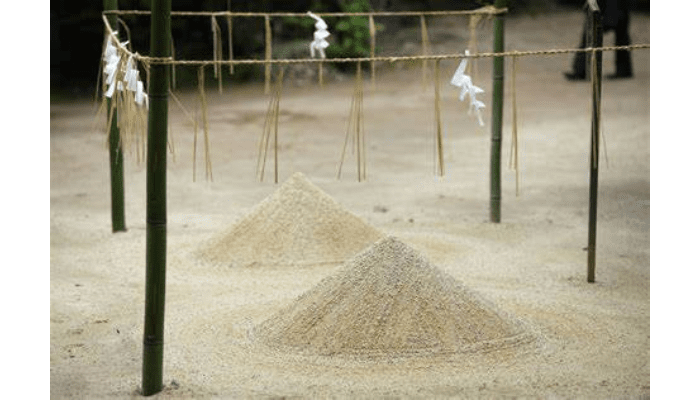
In front of the Worship Hall, you’ll find two conical piles of sand, known as Kiyome no Suna (Purifying Sand). These are believed to purify the shrine grounds and calm the local deities.
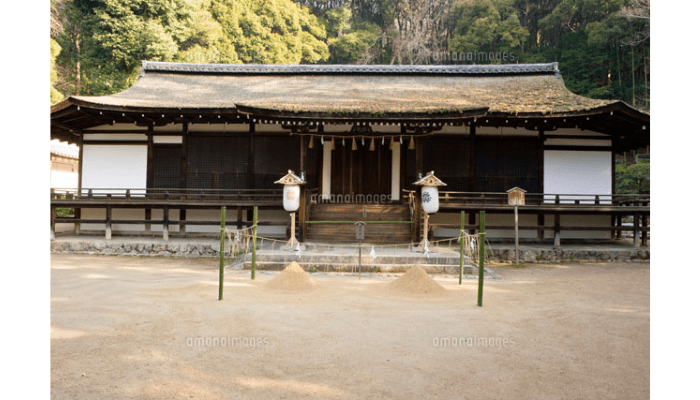
Every year on September 1st, during the Hassaku Festival, shrine parishioners dedicate this sand to the shrine. The piles remain in place for one year and are then scattered around the grounds during important events like New Year’s celebrations and festivals to purify the area.
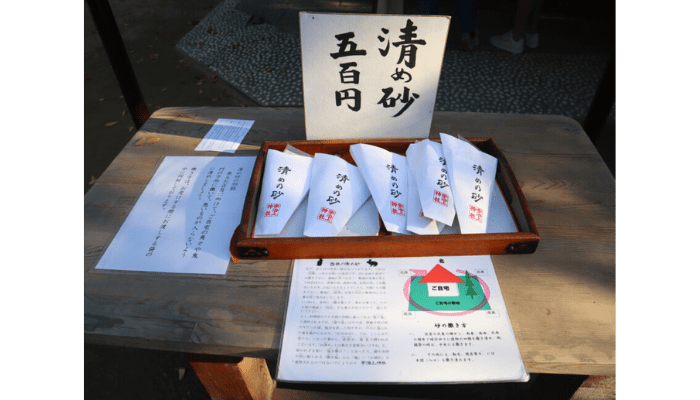
Visitors can also purchase Purifying Sand at the shrine’s office (500 yen per bag). It is said to ward off misfortune and create a protective barrier around homes. If you’re interested in traditional purification rituals, this is a great way to experience one firsthand!
2. Sacred Tree Over 300 Years Old
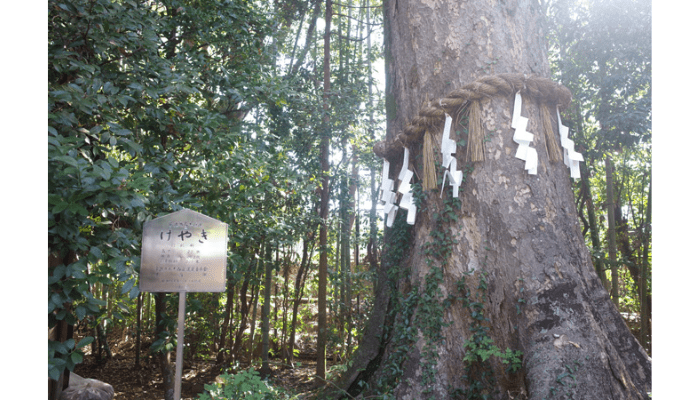
As you walk counterclockwise around the shrine grounds toward the Worship Hall, you’ll come across a towering zelkova tree on the right side of the hall.
This sacred tree stands about 27 meters tall, with a trunk circumference of 4.8 meters, and is estimated to be over 330 years old. It has been recognized as one of the “100 Famous Trees of Uji.”
You may find yourself gazing up in awe, but be mindful of where you step. Avoid stepping on the tree’s roots or touching its bark, as this could damage the tree. Instead, admire its beauty from a respectful distance.
3. Kirihara-sui
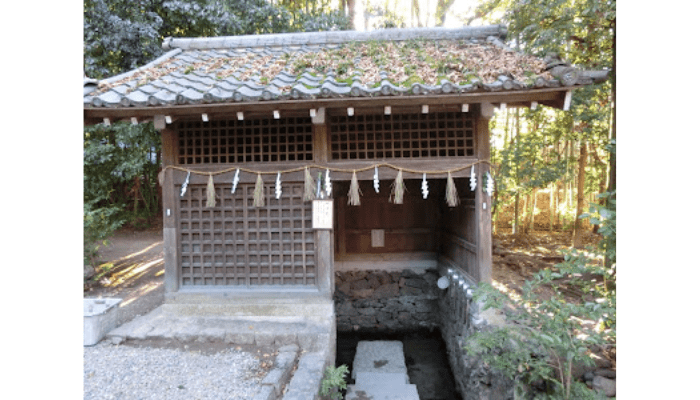
Next to the sacred tree, you’ll find a natural spring known for its purifying properties.
This spring, called Kirihara-sui, was once counted among the “Seven Famous Springs of Uji” (Uji Shichi Meisui). Uji is famous for its high-quality green tea, and excellent water is essential for growing premium tea leaves.
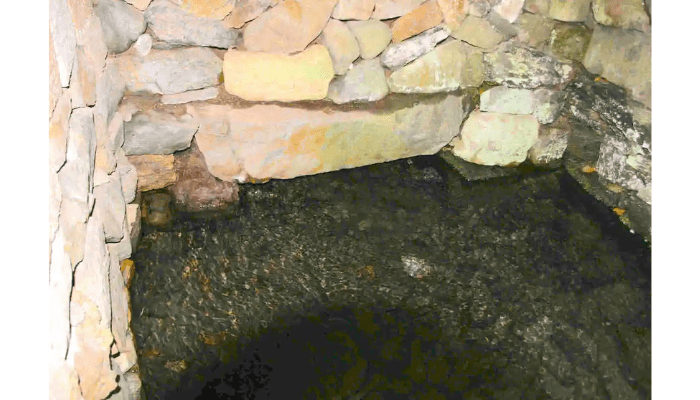
Uji has long been known for its abundant natural springs, but Kirihara-sui is the only one of the original seven that still exists today.
At Ujigami Shrine, this pure spring water is used for ritual hand washing before worship. Cleansing yourself with natural spring water in modern times is a rare and special experience.
You’ll find a ladle hanging near the stone steps—feel free to use it to purify your hands before your visit.
4. The Main Hall (National Treasure)

Behind the worship hall (Haiden) stands the main hall (Honden), where the shrine’s deities are enshrined. As mentioned earlier, this structure was built in the late Heian period and is considered the oldest existing shrine building in Japan.
The Honden sits atop a stone platform and is slightly smaller than the Haiden, giving it a distinct appearance.

Inside, the building consists of three connected sanctuaries (sanden) arranged in a row, following the Ikkensha Nagare-zukuri architectural style. Like the Haiden, each of these sanctuaries has a slightly different design.
The enshrined deities are, from left to right:
- Emperor Nintoku (Nintoku Tennō)
- Emperor Ōjin (Ōjin Tennō)
- Prince Uji no Wakiiratsuko (Uji no Wakiiratsuko no Mikoto)
When praying, follow the shrine etiquette: two bows, two claps, one bow (Nirei Nihakushu Ichirei).
The Mysterious Large Stone Next to the Main Hall
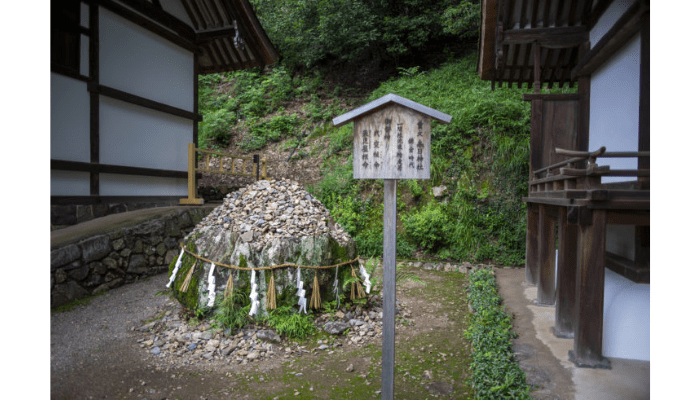
To the east of the main hall, you’ll notice a large stone. This sacred rock marks the site of an ancient shrine that once stood here.
It is believed that such stones were placed to show respect for sacred spaces and prevent people from stepping on them unknowingly.
Looking at the stone, I couldn’t help but think, “That makes sense!”
5. Kasuga Shrine

Within the grounds of Ujigami Shrine, there are five smaller shrines (keidai-sha).
To the east of the main hall, you’ll find Kasuga Shrine, a subsidiary shrine dedicated to two deities:
- Takemikazuchi-no-Mikoto (god of thunder and martial arts)
- Ame-no-Koyane-no-Mikoto (deity of wisdom and rituals)
Built in the late Kamakura period, this shrine is designated as an Important Cultural Property of Japan.
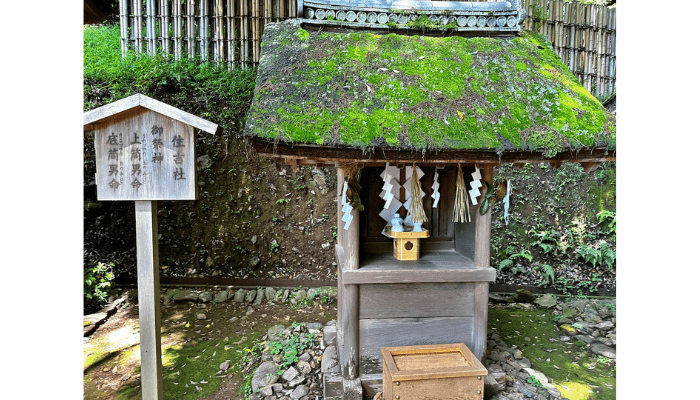
In addition to Kasuga Shrine, there are four other small shrines within the grounds:
- Sumiyoshi Shrine
- Kashii Shrine
- Itsukushima Shrine
- Takehon Inari Shrine
Be sure to visit them all during your visit!
6. Colorful and Unique Goshuin Stamps
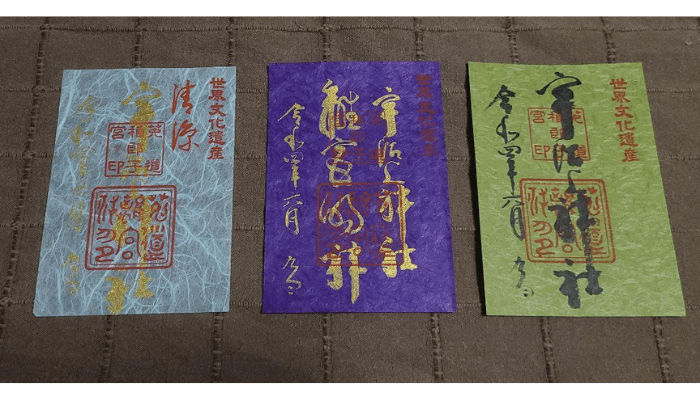
At Ujigami Shrine, the standard goshuin (temple/shrine stamp) features calligraphy in black ink, with red stamps that say “Uji no Wakiiratsuko” (the enshrined deity), “Uji Rikyu” (Uji Imperial Villa), and “World Cultural Heritage.”
If you bring your own goshuin book, you will receive the white-paper version shown in the photo on the right.
However, the gold-ink goshuin is only available as a pre-written (shikishi-style) stamp or for those who purchase a new goshuin book at the shrine.
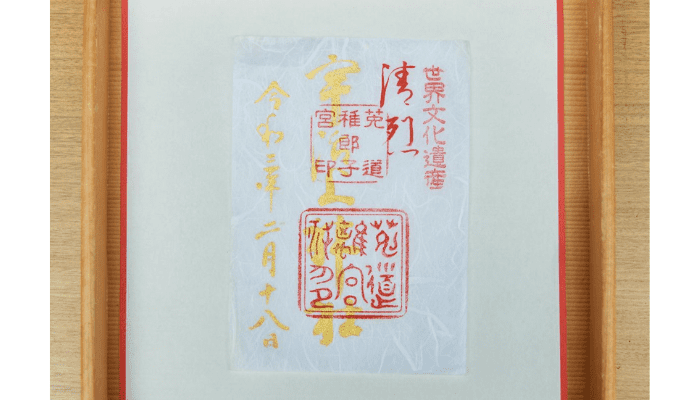
This is the “Snow Rabbit Goshuin”, a winter-exclusive design that I personally received.
The gold ink on white washi paper, accented with vibrant red seals, creates an elegant and eye-catching design—so beautiful that you’ll want to admire it over and over again!
Ujigami Shrine also offers limited-edition goshuin for each season, and even the pre-written versions come on beautiful, colored washi paper. If you visit, be sure to check them out!
Don’t Miss the Lucky Charms (Omamori)!
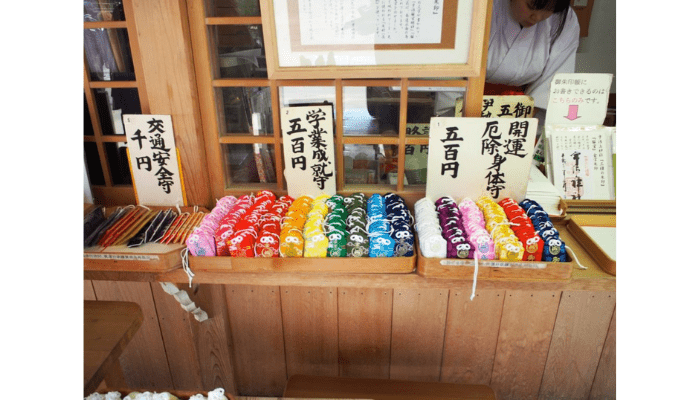
For Japanese people, omamori (protective charms) are a deeply familiar part of life.
Their origins can be traced back to the Jomon period (14,000–300 BCE) when people carried magatama (comma-shaped beads) as protective talismans.
While many Japanese discover goshuin later in life, omamori are something we grow up with from childhood.
At Ujigami Shrine, you can find various types of omamori for:
- Academic success
- Good fortune & protection from misfortune
- Traffic safety
- Love & matchmaking
- Safe childbirth
Each omamori features a rabbit crest, symbolizing Ujigami Shrine.
They also come in a variety of colors, so you can choose one that suits your preference!

If you already have an omamori from another shrine, you might wonder, “Is it okay to have multiple omamori? Will the deities clash?”
According to Ujigami Shrine, it’s perfectly fine to have multiple omamori!
What matters most is respecting the deities and cherishing the charms with sincerity.
7. Wishing Dolls (Negai Ningyo)
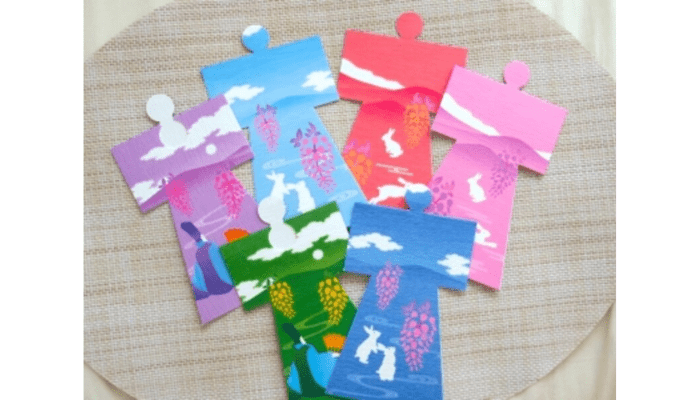
Lastly, let me introduce a unique tradition at Ujigami Shrine.
Unlike many other shrines in Japan, Ujigami Shrine does not have ema (wooden prayer plaques).
Instead, visitors use “Negai Ningyo” (Wishing Dolls) to make their prayers.
At first glance, these paper dolls might look unfamiliar, but they are actually known as “Hitokata” or “Katashiro”—traditional objects used for purification rituals since ancient times.
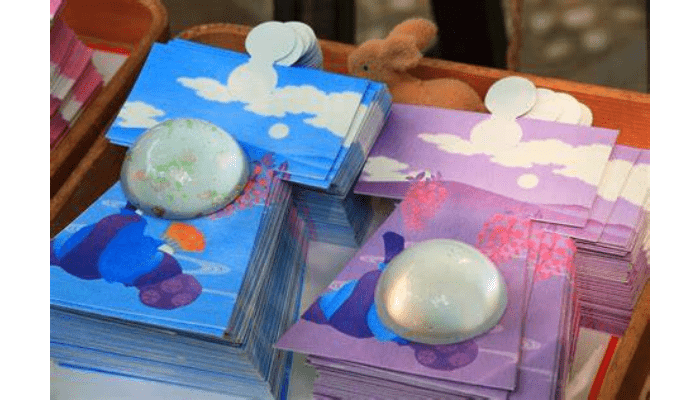
Many shrines use similar dolls during the Nagoshi no Harae (Summer Purification Ritual) in June.
At Ujigami Shrine, the dolls are beautifully decorated, fitting for a place that inspired the “Uji Jujo” (The Ten Chapters of Uji) in The Tale of Genji.
When making a wish, be sure to write only one wish on the doll—this is an important part of the ritual.
Must-Visit Attractions Near Ujigami Shrine
Uji is a city rich in Japanese history, culture, and tradition. It has been featured in famous literary works such as the Manyoshu, The Tale of the Heike, and even The Tale of Genji.
If you’re visiting Ujigami Shrine, why not explore some of the other historical sites nearby?
1. Byodoin Temple

Byodoin Temple was built in the Heian period (794–1185) by Fujiwara no Yorimichi, the son of the powerful statesman Fujiwara no Michinaga.
The temple is famous for its Phoenix Hall, which appears on the Japanese 10-yen coin, and its golden phoenix statues, which are featured on the 10,000-yen bill. Both are designated National Treasures.
Located across the Uji River from Ujigami Shrine, Byodoin was founded in 1053. Its official name is simply Byodoin, but the Phoenix Hall (Hōō-dō) became a widely recognized name during the Edo period (1603–1868). The name comes from the two phoenix statues adorning its roof.

Surrounded by a serene pond, the temple’s vibrant red structure looks like a paradise on earth. It is often called a representation of the Pure Land (Buddhist heaven) on earth.
Byodoin also offers special evening illuminations during certain periods, creating a mystical atmosphere.
For more details on special events and opening hours, check their official website.
Byodoin Temple
- Address: 116 Uji Renge, Uji City, Kyoto Prefecture
- Google Maps: Click here
- Access:
- 10-minute walk from JR Uji Station (Nara Line)
- 10-minute walk from Keihan Uji Station (Keihan Uji Line)
- Phone Number: 0774-21-2861
- Opening Hours:
- Garden: 8:30 AM – 5:30 PM (Last entry: 5:15 PM)
- Phoenix Hall Interior: 9:30 AM – 4:10 PM (Limited to 50 visitors per session, first-come, first-served. Reception starts at 9:00 AM.)
- Byodoin Museum (Hoshokan): 9:00 AM – 5:00 PM (Last entry: 4:45 PM)
- Museum Shop & Goshuin Counter: 9:00 AM – 5:00 PM
- Admission Fees:
- Garden & Museum:
- Adults: 600 yen
- Middle & high school students: 400 yen
- Elementary school students: 300 yen (Children under elementary school age: Free)
- Phoenix Hall Interior: 300 yen (Guided tours available every 20 minutes, max 50 people per session)
- Official Website: Byodoin Temple
2. The Tale of Genji Museum

This public museum brings to life the world of The Tale of Genji, one of Japan’s greatest literary masterpieces.
The museum features exhibits on the “Osawa Manuscript”, a rare version of The Tale of Genji, as well as various artifacts related to the story. Visitors can also enjoy videos and interactive displays that explain the novel’s plot and its timeless appeal.
You can see faithful reproductions of Heian-period furnishings, including an ox-drawn carriage, just like those featured in the story. Even if you haven’t read The Tale of Genji, you can still enjoy this immersive experience.
Uji City Tale of Genji Museum
- Address: 45-26 Uji Higashiuchi, Uji City, Kyoto Prefecture
Google Maps: Click here - Access:
- 6-minute walk from Keihan Uji Station (Keihan Uji Line)
- 13-minute walk from JR Uji Station (Nara Line)
- Phone Number: 0774-39-9300
- Opening Hours:
- 9:00 AM – 5:00 PM (Last entry: 4:30 PM)
- Closed:
- Mondays (If a Monday is a public holiday, the museum is closed the following day)
- New Year holidays
- Admission Fees:
- Adults: 600 yen
- Children: 300 yen
- Official Website: Uji City Tale of Genji Museum
We have introduced Ujigami Shrine, a UNESCO World Heritage site known for being the oldest existing shrine building in Japan.
Kyoto, a city with over a thousand years of history, is home to countless temples and shrines. While times change, the deep faith and traditions of the people remain the same.
From the Heian period to the present day, these cultural treasures have been carefully preserved and passed down through generations. It is our hope that they will continue to be cherished for many years to come.
When visiting Uji, the setting of The Tale of Genji, be sure to stop by Ujigami Shrine and experience its timeless beauty.
▼ Related Articles for Kyoto Sightseeing

